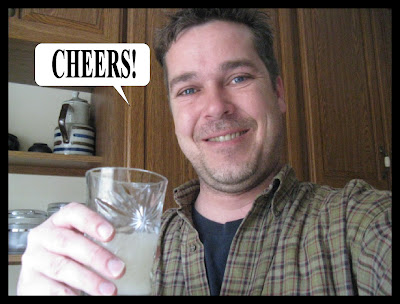
The surface of the Earth is covered in lots and lots of water. In fact, there is more water on the surface of the Earth than land!
Incredibly, only 3% of our world’s water is fresh water. 1/3 of this fresh water is frozen in the polar ice caps. A second 1/3 is trapped underneath the ground in aquifers, leaving only 1/3 of this 3% for human, animal and plant consumption. Water is indeed a most valuable resource!!!

Water is continuously recycling itself. The water that fell to the ground as snowflakes – in the above picture – may very well have been the juicy water in an apple that Shakespeare ate while he was a little boy.

Since the birth of the Industrial age, humanity has been using water in a variety of ways that has had extremely detrimental consequences. I can remember playing in the rain as a little boy and when my mom called me into the house my eyes were red and burning because of the acid in the rain.
As well as humans having a need to clean our air and water, we also have a greater need to conserve this resource. As human populations continue to explode throughout all societies, our need for water grows. By cutting down of the amount of water that we use in our day to day lives, we will decrease the risk of shortages that have been taking place over the last few decades.
Here are two very simple examples of some of the things I have done to conserve water…
A few years ago, Joanne and I were living in an older apartment that had a really nice claw-foot bathtub and antique fixtures. Whenever we had a shower – and that was pretty much daily – well over half the water flowed straight down the drain, without ever having gone through the shower head.
In order for all the water to flow through the shower head the shower lever had to be turned all the way to the left. By doing this the pressure of the water coming out of the showerhead could remove rust from bricks – it was that strong. Because we couldn’t turn the shower lever all the way to the left the water was allowed to flow out of this joint and down the drain.

I went for a visit to my local hardware store to see what I could do to plug this joint. About 20 minutes later I had found a few simple items to fix this problem. My cost was $0.79 after tax! The rubber tubing is attached to the original fixture using a hose clamp. At the bottom end of this hose I inserted a small solid piece of metal and I used another hose clamp to keep that in place. Presto! Done! Problem solved!!
By doing this we used less than ¼ of the water that we had used previously, saving both water and the electricity need to heat it. Immediately we noticed a savings in our monthly water bill!
If we ever felt the need to have a bath all we had to do was loosen the top hose clamp to remove it from the fixture and voila!
+ + + + + +
Many people think that by purchasing new, energy saving appliances that they are doing something good for the environment – like an energy saving dishwasher. Let’s take a closer look…
Dishwashers are made up of all sorts of things. They have a metal frame, plastic components, computerized components, rubber seals and hoses. Each of these items began as a natural resource found in the Earth. Each resource had to be mined. Each mine began as patch of ground covered with trees, shrubs and other vegetation providing homes for many animals, birds and insects. Now that these mines exists the natural landscapes have become scars covering our Earth – not a very nice home if you are a bird.
Once the resources have been mined, they need to be processed. More forestlands are clear-cut to create roads leading from the mines to the processing factories. Since there are so many components needed to create an energy saving dishwasher, a variety of mines are dug and different factories are built to create each component. Finally the components are assembled and a dishwasher has been manufactured.
Now the dishwasher needs to make it into your home. The dishwasher is then packaged in plastic, styrofoam and cardboard and loaded onto a truck. The packaging also had to be created using natural resources so more mines and factories are needed to create these items.
If the energy saving dishwasher was manufactured in China, then it sure has a long way to travel before it ends up in your home. Even if it was manufactured in Canada, I’m sure that it still traveled many miles, using many litres of oil and gasoline to get it to the store where you will buy it. I wonder how many machines are actually needed in just the transportation of the final product from the factory to the retail store? Forklifts, motorized carts, boats, cranes and 18-wheelers all consume oil and gas.

This is my energy saving dishwasher! This white plastic dish tub was a house-warming gift and it was actually manufactured in Canada. The amount of resources need to manufacture this and transport it to my home is probably about 99% less than an actual energy saving dishwasher.
If I wash my dishes in the metal sink, I use about 3 times more water than if I use the dish tub. The metal sink cools the water rather quickly while the dish tubs confines the water to a small space keeping it warm. When we have guests over and a lot of dirty dishes are created I do use the regular sink, but for our day to day washing needs this dish tub saves us a lot of water and electricity used to heat the water.

Sometimes I take this philosophy to the next level and I don’t even use the dish tub. After a light lunch of soup and sandwiches, I’ll use the soup pot as my energy saving dishwasher!

It really doesn’t take too much effort to find simple solutions to save energy and resources, once one is committed to this task. It may not seem that significant, but once more and more people begin to adopt this way of thinking into their everyday lives and all of our societies act in accordance with these philosophies, then this small drop of conservationalism could be the act that changes the world for the better!
+ + + +
Okay! Here’s something else that has to do with water…
I love flipping through vegetarian cookbooks and the other week I found a recipe for drinking water. Yes! You heard me right!
Fill a large pot with 2 juice jugs of water and begin to heat the water to a boil.
Add ¼ cup of Pearl Barley.
Boil for about 40 minutes – the water level should go down to about ½ of the original.
Strain the barley out.
Squeeze ¼ lemon into the remaining water.
Chill and drink.
Well, I tried it! I do love to experiment… and I always hope to learn something in the process, but then I grew scared.

The end result looked rather disgusting if I do say so. Being the pioneering spirit that I am, though, meant that indeed I had to at least give it a try.

I tilted the glass up and ‘CHUG-A-LUG!!!!’

Hey! That wasn’t so bad. Rather refreshing and yummy!
This is a great way to add lots of nutrients to your diet, especially during the winter season. There are other benefits, too…
Most of our houses or apartments get very dry and staticy during the winter because of the heat that we use. Many people buy humidifiers (another thing to be manufactured and transported) to add moisture to this dry air. Instead of doing that, just follow this recipe. The boiling water adds the needed moisture to the air and the boiling process also adds heat to the air.
The nutrients found in the barley dissolve into the water and then into your body. Very healthy on all accounts. Once the boiled barley has been separated from the water, it can be used to supplement any kind of pet food. Koly loves a large tablespoon of boiled barley added to his crunchie-munchies!!!

Many people think that saving the environment is something that our governments need to take care of, by enforcing strict guidelines to the manufacturers. This is completely wrong! Each one of us has the ability to look for simple solutions to everyday problems and then to share these ideas (be them old or new) with our families, friends and neighbours. We don’t necessarily need newer, greener technologies. We need newer and more conscious activities to set a new standard of living standards!
Jim




No comments:
Post a Comment